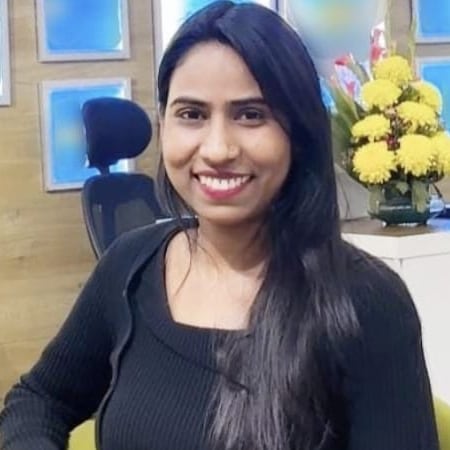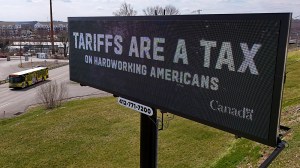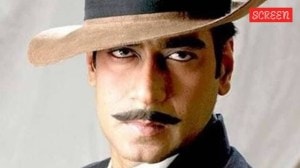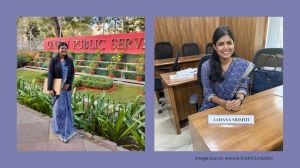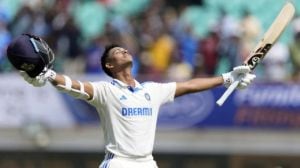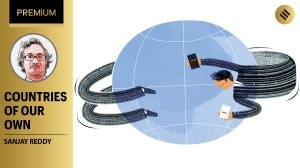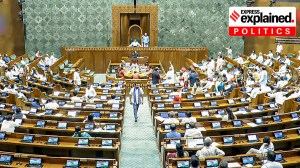UPSC Key: AI copyright concerns, Gold Monetisation Scheme and Myanmar earthquake
How are ChatGPT's Studio Ghibli-style images-related AI copyright concerns relevant to the UPSC exam? What significance do topics like the Gold Monetisation Scheme, Myanmar earthquake and India-US nuclear cooperation have for both the preliminary and main exams? You can learn more by reading the Indian Express UPSC Key for March 30, 2025.
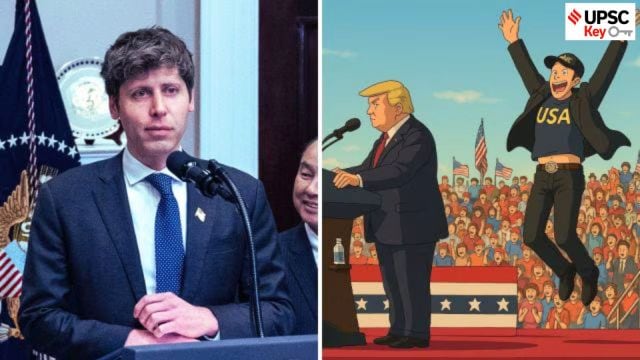 The trend of AI emulating the style of Studio Ghibli has highlighted ethical concerns about artificial intelligence tools trained on copyrighted creative works. (Express Image: X/@memefiInsider)
The trend of AI emulating the style of Studio Ghibli has highlighted ethical concerns about artificial intelligence tools trained on copyrighted creative works. (Express Image: X/@memefiInsider)Important topics and their relevance in UPSC CSE exam for March 30, 2025. If you missed the March 29, 2025, UPSC CSE exam key from the Indian Express, read it here.
THE WORLD
ChatGPT’s Studio Ghibli-style images go viral highlighting AI copyright concerns
Syllabus:
Preliminary Examination: Current events of national and international significance
Mains Examination: General Studies-III: Awareness in the fields of IT, Space, Computers, robotics, nano-technology, bio-technology and issues relating to intellectual property rights
What’s the ongoing story: Fans of Studio Ghibli, the famed Japanese animation studio behind “Spirited Away” and other beloved movies, were delighted this week when a new version of ChatGPT let them transform popular internet memes or personal photos into the distinct style of Ghibli founder Hayao Miyazaki. But the trend also highlighted ethical concerns about artificial intelligence tools trained on copyrighted creative works and what that means for the future livelihoods of human artists.
Key Points to Ponder:
• What is Studio Ghibli?
• Who is Hayao Miyazaki?
• What is copyright?
• What is artificial intelligence?
• What is the issue of copyright in AI?
• What is the responsible use of AI?
• What are the copyright laws in India?
Key Takeaways:
• Miyazaki, 84, known for his hand-drawn approach and whimsical storytelling, has expressed skepticism about AI’s role in animation.
• ChatGPT maker OpenAI, which is fighting copyright lawsuits over its flagship chatbot, has largely encouraged the “Ghiblification” experiments and its CEO Sam Altman changed his profile on social media platform X into a Ghibli-style portrait. In a technical paper posted Tuesday, the company had said the new tool would be taking a “conservative approach” in the way it mimics the aesthetics of individual artists.
• “We added a refusal which triggers when a user attempts to generate an image in the style of a living artist,” it said. But the company added in a statement that it “permits broader studio styles — which people have used to generate and share some truly delightful and inspired original fan creations.”
• As users posted their Ghibli-style images on social media, Miyazaki’s previous comments on AI animation also began to resurface. When Miyazaki was shown an AI demo in 2016, he said he was “utterly disgusted” by the display, according to documentary footage of the interaction.
• He said he would “never wish to incorporate this technology into my work at all.”“I strongly feel that this is an insult to life itself,” he added.
• Josh Weigensberg, a partner at the law firm Pryor Cashman, said that one question the Ghibli-style AI art raises is whether the AI model was trained on Miyazaki or Studio Ghibli’s work. That in turn “raises the question of, ‘Well, do they have a license or permission to do that training or not?’” he said.
• OpenAI didn’t respond to a question Thursday about whether it had a license.Weigensberg added that if a work was licensed for training, it might make sense for a company to permit this type of use. But if this type of use is happening without consent and compensation, he said, it could be “problematic.”
• Weigensberg said that there is a general principle “at the 30,000-foot view” that “style” is not copyrightable. But sometimes, he said, what people are actually thinking of when they say “style” could be “more specific, discernible, discrete elements of a work of art,” he said.
• “A ‘Howl’s Moving Castle’ or ‘Spirited Away,’ you could freeze a frame in any of those films and point to specific things, and then look at the output of generative AI and see identical elements or substantially similar elements in that output,” he said. “Just stopping at, ‘Oh, well, style isn’t protectable under copyright law.’ That’s not necessarily the end of the inquiry.”
Do You Know:
• Intellectual property (IP) refers to creations of the mind, such as inventions; literary and artistic works; designs; and symbols, names and images used in commerce. IP is protected in law by, for example, patents, copyright and trademarks, which enable people to earn recognition or financial benefit from what they invent or create. By striking the right balance between the interests of innovators and the wider public interest, the IP system aims to foster an environment in which creativity and innovation can flourish.
• Artificial intelligence (AI) refers to the field of computer science which aims to make computer systems think, reason, learn, and act to solve a complex system like humans.
Other Important Articles Covering the same topic:
📍This Word Means: Studio Ghibli
Previous year UPSC Mains Question Covering similar theme:
In a globalized world, Intellectual Property Rights assume significance and are a source of litigation. Broadly distinguish between the terms—Copyrights, Patents and Trade Secrets. (UPSC CSE 2014)
FRONT
Key nuclear deal breakthrough: US clears firm to build and design n-reactors in India
Syllabus:
Preliminary Examination: Current events of national and international importance
Mains Examination: General Studies-II: Bilateral, regional and global groupings and agreements involving India and/or affecting India’s interests.
What’s the ongoing story: Two decades after it was inked, decks have been cleared to tap the commercial potential of the India-US civil nuclear deal with an unprecedented regulatory clearance from the US Department of Energy (DoE) that will allow a US company to build and design nuclear reactors in India.
Key Points to Ponder:
• Read about the US-India 123 Civil Nuclear Agreement.
• What are the areas of cooperation between India and the US?
• What are the other key developments in India-US relations in the various sectors?
• What is a reciprocal tariff? Why does Trump want to impose reciprocal tariffs?
• What is the bilateral trade agreement between India and the USA?
• What would be the impact of reciprocal tariffs on India?
• Know the key highlights of the Modi-Trump meeting held last month (February 2025).
Key Takeaways:
• The March 26 approval from DoE cleared Holtec International’s application for specific authorisation with respect to the restrictive regulation that is referred to as “10CFR810”. (Part 810 of Title 10, Code of Federal Regulations of the US Atomic Energy Act of 1954). This authorisation permits Holtec, with conditions, to transfer “unclassified small modular reactor (SMR) technology” to three firms in India.
• So far, the regulation, while giving US companies, such as Holtec, the ability to export equipment to countries such as India under strict safeguards, explicitly barred them from manufacturing any nuclear equipment or performing any nuclear design work in India. This provision was a non-starter from New Delhi’s perspective, which wanted to participate in manufacturing SMRs and co-produce the nuclear components for its domestic needs.
• This comes weeks after an announcement on renewed nuclear cooperation between the two countries to “fully realise” the US-India 123 Civil Nuclear Agreement, marking a significant diplomatic upside for India.
• At a time when the Trump administration has been extremely transactional on the issue of balancing trade deficits and supporting US manufacturing, the commitment to move forward on plans to jointly build US-designed nuclear reactors in India — through large scale localisation and possible technology transfer — is being seen as a significant diplomatic gain for India.
• The new deal potentially offers a chance for India’s nuclear sector to upgrade its reactor specialisation to those in use across much of the world, and scale up capacity addition against the current glacial pace of project development.
• The plan to leverage private sector capabilities to get into the niche, but growing, SMR space is also significant. Though India’s civil nuclear programme has expertise in manufacturing smaller reactor types – 220MWe PHWRs (pressurised heavy water reactors) and above – the problem for India is its reactor technology.
• Based on heavy water and natural Uranium, PHWRs are increasingly out of sync with the pressurised water reactors or PWRs (a light-water nuclear reactor type that constitute the large majority of the world’s nuclear power plants) are now the most dominant reactor type across the world. Holtec International, a privately-held company, is billed as one of the world’s largest exporters of capital nuclear components and is a leader in the decommissioning sector.
From “India-US trade deal: First tranche by Fall, but no relief yet on reciprocal tariffs”
• The four-day India-US trade talks concluded Saturday with substantial convergence on the contours of a trade deal but without finalising the Terms of Reference (ToR), a document that kickstarts negotiations by defining the scope and objectives of a bilateral trade agreement (BTA), a government official told The Indian Express.
• In a statement after the talks, India’s Commerce and Industry Ministry said the talks ended with a “broad understanding” of the next steps towards a bilateral trade agreement both countries aim to sign by Fall. It, however, did not indicate whether there would be any relaxation on President Donald Trump’s decision to impose reciprocal tariffs from April 2 as was expected by the Indian industry.
• Trump has already imposed 25 per cent tariffs on steel and aluminium and is set to impose tariffs on automobiles and auto parts from April 3. Indian steel exporters have told the government that US tariffs have affected nearly $5 billion worth of exports, while auto-component exporters fear selective concessions could threaten India’s $7 billion exports to the US.
Do You Know:
• The 123 agreement signed by India and the US way back in July 2007 did, in fact, explicitly aim to enable full civil nuclear energy cooperation between the two sides by providing for “full civil nuclear energy cooperation covering nuclear reactors and aspects of the associated nuclear fuel cycle including enrichment and reprocessing” Since then, there has been no progress on the ground and a single investment is yet to come through.
• On the Indian side, there are legal issues too. The Civil Liability for Nuclear Damage Act, 2010, which sought to create a mechanism for compensating victims from damage caused by a nuclear accident, and allocating liability and specifying procedures for compensation, has been cited as an impediment by foreign players such as GE-Hitachi, Westinghouse and French nuclear company Areva.
• This is primarily on the grounds that the legislation channelises operators’ liability to equipment suppliers, with foreign vendors citing this as a reason for worries about investing in India’s nuclear sector due to fear of incurring future liability.
• Amendments to the Atomic Energy Act 1962 also have to be initiated to enable private companies to enter nuclear generation as operators, which is currently restricted to only state-owned companies. The Indian government has committed to getting this done.
Other Important Articles Covering the same topic:
📍Note of caution: what bilateral trade deal with US could mean for India
📍UPSC Issue at a Glance | PM Modi’s US Visit: 4 Key Questions You Must Know for Prelims and Mains
📍UPSC Issue at a Glance | Tariff war: 4 Key Questions You Must Know for Prelims and Mains
UPSC Previous Year Prelims Questions Covering similar theme:
(1) In the Indian context, what is the implication of ratifying the ‘Additional Protocol’ with the ‘International Atomic Energy Agency (IAEA)’?(UPSC CSE 2018)
(a) The civilian nuclear reactors come under IAEA safeguards.
(b) The military nuclear installations come under the inspection of IAEA.
(c) The country will have the privilege to buy uranium from the Nuclear Suppliers Group(NSG).
(d) The country automatically becomes a member of the NSG.
UPSC Previous Year Mains Question Covering similar theme:
‘What introduces friction into the ties between India and the United States is that Washington is still unable to find for India a position in its global strategy, which would satisfy India’s National self-esteem and ambitions’. Explain with suitable examples. (UPSC CSE 2019)
Myanmar quake toll over 1,600, India sends relief, rescue teams
Syllabus:
Preliminary Examination: Indian and World Geography – Physical, Social, Economic geography of India and the World
Mains Examination: General Studies-I: Important Geophysical phenomena such as earthquakes, Tsunami, Volcanic activity, cyclones. etc., geographical features and their location-changes in critical geographical features (including water-bodies and ice-caps) and in flora and fauna and the effects of such changes.
What’s the ongoing story: With the death toll in Myanmar rising to 1,644 a day after a 7.7-magnitude earthquake hit the country and neighbouring Thailand, India on Saturday launched Operation Brahma to aid rescue and relief work, pitching in with tonnes of ration, tents, medicines, sleeping bags, rescue teams and equipment, canine squad and a fully functional field hospital.
Key Points to Ponder:
• What is Operation Brahma?
• Read about the other humanitarian evacuation missions conducted by India.
• What is an earthquake? Can earthquakes be predicted?
• Know in detail-Primary waves (p-waves), Secondary waves (s-waves), L-waves and Rayleigh waves
• What are tectonic plates? What are the major tectonic plates?
• What is the “strike slip faulting”?
• What are the effects of earthquakes?
• What are the different earthquake zones in India?
• What are the most earthquake-prone zones of the world?
(Thought process: Read about the circum-Pacific seismic belt, Alpide earthquake belt (mid Continental belt), and submerged mid-Atlantic Ridge.)
• Map Work-Mark the epicentre of the earthquake in Myanmar
Key Takeaways:
• Prime Minister Narendra Modi spoke to Senior General Min Aung Hlaing, who heads the military-led government in Myanmar, on Saturday morning — his first call with the military leader since the February 2021 coup there.
• Under Operation Brahma, which officials said is named after the God of creation and is aimed at rebuilding the country, India sent multiple tranches of disaster relief material, humanitarian assistance, search and rescue teams.
• The total aid sent by India via air sorties and naval ships so far is 137 tonnes, sources said, adding that more aid would be sent as per requirement.
• “India has dispatched two naval ships to the neighbouring country,” Ministry of External Affairs (MEA) spokesperson Randhir Jaiswal said at a special briefing on Saturday. Besides the Humanitarian Assistance and Disaster Relief (HADR) being sent via aircraft, a field hospital with 118 members from Agra was also being sent, he said.
• External Affairs Minister S Jaishankar said Indian Navy Ships INS Satpura and INS Savitri were headed to Yangon port in Myanmar with tonnes of aid.
• The US, China, Russia and Singapore have also dispatched relief and rescue support. In the past, India sent NDRF personnel abroad during the 2015 Nepal earthquake under Operation Maitri, and the 2023 Turkiye quake under Operation Dost.
• The first consignment of 15 tonnes of relief material landed in Yangon on Saturday on a C-130J military transport aircraft of the IAF. The relief material was handed over by Ambassador Thakur to Yangon’s Chief Minister U Soe Thein. It includes tents, blankets, sleeping bags, food packets, hygiene kits, generators, and essential medicines.
Do You Know:
• An earthquake is an intense shaking of the ground caused by movement under the earth’s surface. It happens when two blocks of the earth suddenly slip past one another. This releases stored-up ‘elastic strain’ energy in the form of seismic waves, which spread through the earth and cause the shaking of the ground.
• USGS says that “the location below the earth’s surface where the earthquake starts is called the hypocenter, and the location directly above it on the surface of the earth is called the epicentre.”
• The USGS said the Myanmar earthquake took place due to the “strike slip faulting” between the Indian and Eurasian plates, meaning these two plates rubbed sideways against each other.
• The quake took place on the Sagaing Fault, which runs north to south through the centre of Myanmar, and is prone to earthquakes. A fault is a fracture or zone of fractures between two blocks of rock, which allows the blocks to move relative to each other, sometimes leading to earthquakes.
Other Important Articles Covering the same topic:
UPSC Prelims Practice Question Covering similar theme:
(2) Consider the following plates:
1. Nazca plate
2. Scotia plate
3. Arabian plate
4. Indian plate
What is the correct chronological order of these plates from west to east?
(a) 3—1—2—4
(b) 1—2—3—4
(c) 2—1—3—4
(d) 2—3—1—4
(3) The MSK, or Medvedev-Sponheuer-Karnik scale is a measure of:
(a) intensity of earthquakes
(b) strength of earthquakes
(c) energy released during earthquake
(d) magnitude of the earthquake
Previous year UPSC Mains Question Covering similar theme:
Discuss about the vulnerability of India to earthquake related hazards. Give examples including the salient features of major disasters caused by earthquakes in different parts of India during the last three decades. (UPSC CSE 2021)
ECONOMY
What RBI says about existing deposits under Gold Monetisation Scheme
Syllabus:
Preliminary Examination: Current events of national and international importance
Mains Examination: General Studies-III: Indian Economy and issues relating to planning, mobilisation, of resources, growth, development and employment.
What’s the ongoing story: After sovereign gold bonds, the Centre has drawn the curtains on another gold-related scheme — the Gold Monetisation Scheme (GMS) — amid a spike in gold prices. The Ministry of Finance in a release issued late on Tuesday said that it will discontinue medium- and long-term deposits under the Gold Monetisation Scheme from March 26.
Key Points to Ponder:
• What is the Gold Monetisation Scheme?
• Read about the Sovereign Gold Bonds Scheme (SGBs).
• How does gold impact India’s current account deficit?
• What is the role of gold in forex reserves?
• What are the factors that affect gold prices worldwide?
• Know about the gold reserves in India.
• What are the major gold-producing states in India?
• Why is gold generally seen as a hedge against inflation ?
• What is the status of other gold schemes in India?
Key Takeaways:
• The Ministry cited evolving market conditions and performance of the scheme while announcing the discontinuation. However, short-term bank deposits, which are under the ambit of banks in the scheme, will continue at the discretion of individual banks based on the commercial viability as assessed by them, the Ministry said.
• The Gold Monetisation Scheme was launched in November 2015 to make idle gold productive; It let consumers to either sell their gold or store it with banks, so it could merge into the formal economy and reduce the country’s gold imports and thus, reduce the current account deficit. Idle gold held by households, trusts and various institutions in India was deposited under this scheme.
• GMS was a revamped version of an older Gold Deposit Scheme. It consisted of three components: (1) Short-term bank deposit (1-3 years); (2) Medium-term government deposit (5-7 years); and (3) Long-term government deposit (12-15 years). The minimum deposit allowed was 10 gm of raw gold (bars, coins, jewellery excluding stones and other metals). There was no maximum limit for deposit under the scheme.
• The amount of interest rate payable for short-term deposits under the Gold Monetisation Scheme is decided by the banks on the basis of the prevailing international lease rates, other costs, market conditions, etc., and is borne by the banks. For medium- and long-term deposits, the rate of interest was decided by the government, in consultation with the RBI and borne by the Central government. Gold Monetisation Scheme interest rate was fixed at 2.25 per cent for medium-term bonds and at 2.5 per cent for the long-term bonds.
• The Ministry of Finance on Tuesday said it has decided to discontinue the Gold Monetisation Scheme, except for short-term deposits that are rendered by the banks and not the government. “Based on the examination of the performance of the Gold Monetisation Scheme (GMS) and evolving market conditions, it has been decided to discontinue the Medium Term and Long Term Government Deposit (MLTGD) components of the GMS w.e.f. March 26, 2025,” the statement said.
• The Reserve Bank of India (RBI) will issue detailed guidelines on this issue, the Ministry said. The RBI has not separately issued a release so far but it has updated the section on the Gold Monetisation Scheme on its website. “It may be noted that consequent to Government of India’s press release dated March 25, 2025, mobilisation of MTGD and LTGD, including renewal of existing deposits, has been discontinued with effect from March 26, 2025,” the RBI said.
• The Gold Monetisation Scheme is the second gold scheme to face closure by the government in recent months amid a sharp surge in gold prices. The Centre had earlier discontinued fresh issuance of sovereign gold bonds. Gold prices have risen sharply by Rs 26,530 or 41.5 per cent to Rs 90,450 per 10 gm (as of March 25, 2025) from Rs 63,920 per 10 gm on January 1, 2024.
Do You Know:
• SGBs are debt securities issued by the Reserve Bank of India (RBI) on behalf of the government, with each unit denoting a gram of gold. These bonds offer the flexibility of trading in the secondary market, providing investors with the opportunity to accrue capital gains. It is also used by the government to finance its fiscal deficit. The interest on SGBs is fixed, ensuring a predictable income stream.
• The United States has the largest gold reserves, nearly as many as the combined total of the next three countries: Germany, Italy, and France.
• Here are the current rankings of gold reserves by country in Q2 2024, as reported by the World Gold Council.
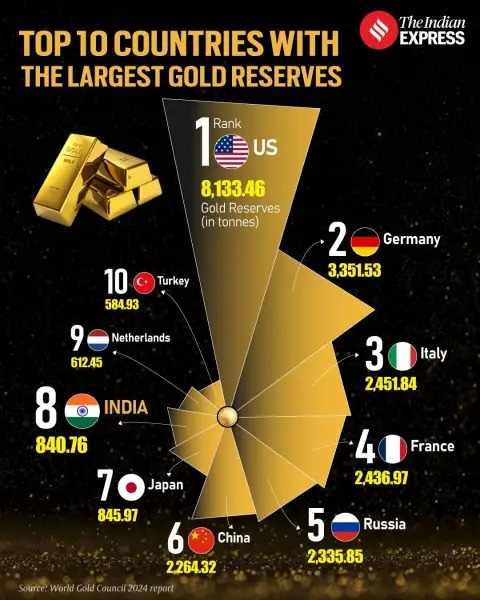
• The World Gold Council was formed in 1987 as a non-profit organisation with the aim of promoting the use and demand for gold through marketing, research, and lobbying. Its headquarters is located in London (UK), with offices around the world in New York, Shanghai, Singapore, Beijing, and Mumbai.
Other Important Articles Covering the same topic:
📍Gold Monetisation Scheme to end for medium-term, long-term deposits
📍Knowledge nugget of the day: Sovereign Gold Bonds Scheme (SGBs)
Previous year UPSC Prelims Question Covering similar theme:
(4) What is/are the purpose/purposes of the Government’s ‘Sovereign Gold Bond Scheme’ and ‘Gold Monetization Scheme’? (UPSC CSE 2016)
1. To bring the idle gold lying with Indian households into the economy.
2. To promote FDI in the gold and jewellery sector.
3. To reduce India’s dependence on gold imports.
Select the correct answer using the code given below:
(a) 1 only
(b) 2 and 3 only
(c) 1 and 3 only
(d) 1, 2 and 3
(5) Which one of the following groups of items is included in India’s foreign-exchange reserves? (UPSC CSE 2013)
(a) Foreign-currency assets, Special Drawing Rights (SDRs) and loans from foreign countries
(b) Foreign-currency assets, gold holdings of the RBI and SDRs
(c) Foreign-currency assets, loans from the World Bank and SDRs
(d) Foreign-currency assets, gold holdings of the RBI and loans from the World Bank
Previous year UPSC Mains Question Covering similar theme:
Craze for gold in Indians has led to surge in import of gold in recent years and put pressure on balance of payments and external value of rupee. In view of this, examine the merits of Gold Monetization scheme. (UPSC CSE 2015)
‘Must explore fuel cycle options instead of reactor options to step up nuclear capacity’
Syllabus:
Preliminary Examination: Current events of national importance and economic development
Mains Examination: General Studies-II, III: Government policies and interventions; Economic development, Indigenization of technology and developing new technology.
What’s the ongoing story: Amid delays in plans for large-scale deployment of Fast Breeder Reactors (FBR) — the vital second stage of India’s three-stage atomic energy programme — one of the country’s top nuclear scientists has said that a solution could lie in the country’s policy makers looking at fuel cycle options instead of reactor options.
Key Points to Ponder:
• Read about India’s atomic energy programme and Nuclear Energy Mission.
• What is India’s Nuclear doctrine?
• What are Fast Breeder Reactors (FBR)?
• Can the private sector lead India’s nuclear power journey?
• What are small modular reactors (SMRs)?
• How are SMRs different from traditional nuclear reactors?
• What are the challenges faced by India in the nuclear energy sector?
• What are the advantages of nuclear energy?
Key Takeaways:
• The delays in FBR deployment is bad news for India’s nuclear programme, given that these reactors envisaged the use of recycled fuel while breeding much more fissile fuel.
• A quick solution to tide over this problem could lie in irradiating thorium — the radioactive metallic element named after the Norse god that has been a long standing hope for India’s true energy security — along with a fuel variant called high assay, low enriched uranium (HALEU) in the country’s pressurised heavy-water reactors (PHWRs) at scale, Anil Kakodkar, former director of Bhabha Atomic Research Centre, told The Indian Express.
• The used fuel from these PHWRs — the mainstay of India’s nuclear power programme — can then be recycled to set up additional power generation capacity, including through the new-age molten salt reactors (MSRs) as part of the third stage of India’s three-stage nuclear power development programme.
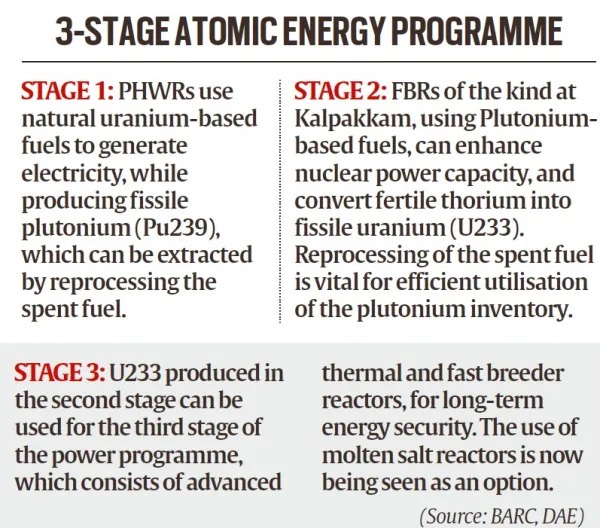
• HALEU is defined as uranium enriched to greater than 5 per cent and less than 20 per cent of the uranium-235 (U-235) isotope, which is different from the uranium fuel enriched up to 5 per cent U-235 that is typically used in the current fleet of light water reactors deployed by most western countries.
• Applications for HALEU are currently limited to research reactors and it is not yet widely available commercially. This also comes at a time when China is planning to build a nuclear power plant on the edge of the Gobi Desert that would be the first in the world to use molten salt as the fuel carrier and coolant, and the first to use thorium as a fuel source instead of the uranium traditionally used in nuclear reactors.
• “The only way to exponentially increase the rate of nuclear power output, given the supply constraints on uranium, is to start recycling uranium and bringing in thorium into the (generation) mix as early as possible,” Kakodkar said. Recycled nuclear fuel would then be necessary to sustain the capacity addition growth rate. For that the FBR was seen as crucial, but delays had dogged the large-scale deployment of these reactors.
Do You Know:
• In her budget speech, Finance Minister Nirmala Sitharaman said the government would set up a Nuclear Energy Mission worth ₹20,000 crore for research and development of SMRs, and promised that at least five such indigenously developed SMRs would be operationalised by 2033.
• Finance Minister also promised to amend the Atomic Energy Act and the Civil Liability for Nuclear Damage Act to accelerate private sector participation in building and operating nuclear power plants.
• Notably, unlike renewables like solar or wind, nuclear energy offers a reliable source of on demand electricity generation, and is not susceptible to weather-related interruptions.
• The International Atomic Energy Agency (IAEA), an international body that advises governments on the transition to clean energy, says nuclear energy has to more than double by 2050 if the world has any chance of reaching net zero. The problem with nuclear power currently is that it is big and expensive, takes too long to build and could cause civilisation-ending disasters if something were to go wrong.
Other Important Articles Covering the same topic:
📍Knowledge Nugget: How is Nuclear Energy Mission and Small Modular Reactors relevant for UPSC Exam?
📍Explained: India’s doctrine of Nuclear No First Use
Previous year UPSC Prelims Question Covering similar theme:
(6) Consider the following countries: (UPSC CSE 2015)
1. China.
2. France
3. India
4. Israel
5. Pakistan
Which among the above are Nuclear Weapons States as recognized by the Treaty on the Non-Proliferation of Nuclear Weapons, commonly known as Nuclear Non-Proliferation Treaty (NPT)?
(a) 1 and 2 only
(b) 1, 3, 4 and 5 only
(c) 2, 4 and 5 only
(d) 1, 2, 3, 4 and 5
OPINION
Why Bengal never saw a unified Dalit campaign
Syllabus:
Preliminary Examination: Current events of national and international significance
Mains Examination: General Studies- I, II: Salient features of Indian Society, Diversity of India, Constitution, Government policies and interventions for development in various sectors and issues arising out of their design and implementation.
What’s the ongoing story: Adrija Roychowdhury writes- “In March this year, 550 Dalits in Gidhagram, a small village in West Bengal’s Purba Bardhaman district, entered a local temple for the first time. The incident has reignited discussions on the issue of caste-based discrimination in a state that has for long, and in popular consciousness, been considered as ‘casteless’.”
Key Points to Ponder:
• What are the constitutional provisions for the protection of SC and ST?
• Who are Dalits? Why are they called Dalits?
• What are the present conditions of Dalits in Indian Society in terms of social and economic perspective?
• Why is untouchability towards Dalit community still prevalent even after affirmative actions ensured by the highest authority that is by the Constitution of India??
• What is Sanskritization? Who gave the concept of Sanskritization?
• What are the challenges faced by the Scheduled Caste (SC) and Scheduled Tribe (ST) communities?
• What are the initiatives taken by the government for the socio-economic improvement of the SC/ST community?
Key Takeaways:
• “But is caste indeed absent in West Bengal, or is it merely absent from public discussions? “I would say that caste has been unrecognised in Bengal, and that there was a conscious effort to do so,” says historian Sekhar Bandyopadhyay in an interview with indianexpress.com.”
• “Experts point out that even though caste has been a social reality in Bengal, much like the rest of India, the rigours of the system were not strict in the Bengali-speaking region. This was due to certain historical factors. “To begin with, Bengal was distant from the core geographical area of Brahmanism,” explains Bandyopadhyay.”
• “Moreover, when Brahmanism started gaining currency in the region from around the 11th century, it was constantly interacting with the more liberal tribal culture of the region.”
• “It was only in the 12th century that there was a resurgence of Brahmanism in Bengal which led to the formalisation of the varna social organisation. However, the emergence of the Bhakti movement in Bengal in the 14th and 15th centuries once again had a corroding effect on the caste apparatus.”
• “The 19th century in the Indian subcontinent was specifically characterised by social reform movements, a large number of which was focused on the eradication of caste discrimination. The Prarthana Samaj in Bombay and Jyotirao Phule’s Satyashodhak Samaj, for instance, were focused upon abolition of caste inequalities and the upliftment of the Dalits.”
• “The conspicuous absence of caste in the public consciousness of Bengal is accompanied by an equally noticeable lack of a consolidated lower-caste or Dalit movement, of the kinds that occurred in Tamil Nadu, Uttar Pradesh or Bihar pre- and post-independence. This is despite the fact that Dalits comprise 23.51 percent of the total population of West Bengal (according to the 2011 census of India). The state also has the second-highest Dalit population in India at 10.66 percent.”
• “Yet another factor that contributed to the disappearance of the Dalit movement in the region was the emergence of the Communist regime in later years. “Communism offered Dalits an Overton window to remedy economic exploitation and discursive land reforms. However, the communist emphasis on the ‘proletariat’ as an ontologically economic category ensured that Dalitness was not recognised as a disruptive political category,” suggests Chatterjee.”
Other Important Articles Covering the same topic:
📍Dalits denied temple entry in West Bengal busts the myth of a casteless state
| ALSO IN NEWS | |
| New clinical trial offers hope for PAD patients with diabetes | Semaglutide, the diabetes and weight loss drug that’s commonly known as Ozempic, can help patients of peripheral artery disease walk a longer distance. This is usually common among diabetics. Peripheral Artery Disease (PAD) is a condition in which narrowed arteries reduce blood flow to the arms or legs. It is one of the most common and serious complications of diabetes and is a leading cause of disability and amputation. PAD impacts more than 230 million people globally, and there are currently no available medical treatments that can prevent or delay complications in diabetics. |
| ‘Father of cooperative movement’: Meet Tribhuvandas Patel of Amul trio | When the Lok Sabha passed a Bill last Wednesday to set up the Tribhuvan Sahkari University in Gujarat’s Anand, there was jubilation in the hometown of Tribhuvandas Kishibhai Patel, considered the “father of the cooperative movement” in the country. A two-time Rajya Sabha MP from 1967 to 1975, Patel was awarded the Ramon Magsaysay Award for community leadership in 1963 and the Padma Bhushan in 1964. He is also remembered for financing a film on Sardar Patel later in his life. He passed away in 1994. |
| Top Maoist leader among 18 killed in two encounters in Chhattisgarh | A senior Maoist leader involved in the 2013 Jhiram Ghati attack, in which several Congress leaders were killed, was among 18 Maoists gunned down in two encounters in Sukma and Bijapur districts of south Chhattisgarh on Saturday, officials said. |
| Prelims Answer Key |
| 1. (a) 2. (b) 3. (a) 4. (c) 5. (b) 6. (a) |
🚨 Click Here to read the UPSC Essentials magazine for March 2025. Share your views and suggestions in the comment box or at manas.srivastava@indianexpress.com🚨
Subscribe to our UPSC newsletter. Stay updated with the latest UPSC articles by joining our Telegram channel – IndianExpress UPSC Hub, and follow us on Instagram and X.
Must Read
Buzzing Now


Apr 02: Latest News
- 01
- 02
- 03
- 04
- 05

